- Home
- P. T. Deutermann
Trial by Fire Page 7
Trial by Fire Read online
Page 7
The ship’s doctor, Commander Sam Levine, Medical Corps, USN, was waiting in George’s office with a report on the pilot who’d gone into the drink. He’d survived the ditching with the usual cuts and bruises, but then had had a bunch of skin flayed off his back when a wave dragged him along the destroyer’s barnacled-covered side while the deck crew were trying to hoist him aboard. He’d have to go back to the hospital at Pearl for some skin grafts. George indicated that the doc should join him in his stateroom, which was next door to the main ship’s office, and then closed the door.
“We’re not going back into Pearl, Sammy,” he said, once they had some privacy. “We’re going to head west tonight. Right from the op-areas. The captain will inform the ship’s company tomorrow morning, once we’ve put some miles between us and Pearl. Next stop will be an at-sea refueling near Midway, and then we’re on to Guam.”
Sammy swore. “I was depending on going back in one last time. There’s a whole bunch of medical supplies waiting at the Supply Center. Two new docs, up-to-date meds, and some of this new penicillin stuff. Plus, I’ve got some people in sick bay who need to see a specialist or two.”
“I know, Sammy. I’ve got about thirty crew replacements waiting on the dock. The departments have all sorts of stuff waiting for them, too. But the captain is adamant: We’re headed west tonight. Guam will be the next port where we can onload anything of consequence. The WestPac Service Force is just gonna have to stage everything and everybody all the way across the pond.”
Sammy stared at the deck for a moment, shaking his head. “I’ve got a bad feeling about this trip, XO,” he said. “This guy, he’s—”
George raised his hand. “That’s enough, Sammy,” he said. “He’s the captain, remember? Look at it this way: he may know something that the rest of us don’t, including me. The big bosses ashore wouldn’t allow him to do this unless there was an overarching need. So: regroup. I’ll see what we can manage at Midway when the tanker comes out to refuel us. But if I were you, I’d plan to see your people and stuff in Guam. Or maybe even never.”
“What the hell does that mean, George?” Sammy asked.
George had surprised himself, saying that. “I’m not quite sure I know, Sammy. There’s so many things happening as America and its allies close in on Japan itself, that the sheer scale of it all is driving the forces, not the other way around. Anyway, turn to and commence ship’s work.”
“Aye, aye, sir,” Sammy said, but as he left, George saw an obviously worried man. He decided to summon the chief engineer, let him in on the big secret, and ask him where they were with the firefighting systems’ schematics problem.
12
The next morning, right after morning quarters, the bosun’s call sent its ear-piercing all-hands whistle throughout the ship from the 1MC station on the bridge. Everyone aboard paused what they were doing to listen up.
“This is the captain speaking.” That announcement provoked some interesting pantomimes in various spaces throughout the ship, all of them well away from the prying eyes of officers.
“As some of you may have noticed, we are headed northwest, which is why the sun came up astern this morning. We’re on a course for the vicinity of Midway Island, where we will rendezvous with a fleet tanker before continuing on to Guam. We’ll refuel again at Guam, embark a flag officer and his staff, and then join Task Force 58. Soon after that we’ll commence strike operations against the Japanese home islands.”
There was a brief moment of surprised silence.
“I don’t need to tell you that the Japs are becoming desperate. After three-plus years of total warfare, we’ve pushed them back into their home defenses. They are facing the certain knowledge that their destruction is imminent. The kamikaze is one of the few weapons left to them that actually works as a ship-killer. I am confident that our next encounter with the kamikazes will turn out better than our last, but to that end we will continue to conduct training operations en route at the same pace we’ve been maintaining during shakedown.
“These constant drills, general quarters at all hours of the day and night, and hands-on training are aimed at doing things again and again until they become second nature. It’s hard. I know it’s hard. But that is the only way we can prepare for what’s coming as the Japs realize their treacherous yellow backs are up against the wall. Understand something: their whole damned nation is one big death cult. They believe that the best thing that can happen to them in life is to die in battle for their so-called god-emperor. You and I should agree with that: we think the best thing that can happen to the Japanese is for them all to die, in battle or otherwise. The problem is, when a warrior has nothing to lose, you can no longer negotiate with him, deter him, or scare him away. A pilot with a death wish is going to keep coming at you unless you literally blast him from the sky.
“That requires a team effort: our attack planes strike their air bases and destroy as many of their aircraft on the ground as possible. But when their remaining planes come, and they will come, it’ll be the long-distance combat air patrols who’ll get the first crack at ’em. Then the close-in CAPs. Then our escorting cruisers, destroyers, and even the battleships. But since only one of the bastards getting through all that can destroy this ship, you become the last but most important line of defense. Therefore, you must be the most intense, vicious, furious line of defense, despite all the previous help from our many defenders. So: We’re going to practice that. A lot. We’ll practice that to the point where you will hate it, but at the same time, you’ll be able to do it practically in your sleep.
“Last thing: We are now committed to all-out war at sea. Not dedicated, but committed. Do you know the difference? A chicken is dedicated to the production of eggs. A pig is committed to the production of bacon. Stand by to stand by. That is all.”
George listened to the captain’s little speech, increasingly in awe. Hate him or love him, there was no arguing with anything he’d said. He decided at that moment to rebuke even more sharply anyone bitching about the captain and his unforgiving ways. Japan was a cornered animal now. The memory of the kamikaze strike last October was still fresh in his mind, but over half the crew literally had zero appreciation of what might be coming. He realized that for some months, he had been acting somewhat as a buffer between the unpleasant new commanding officer and the ship’s company George knew and respected. But now, as they finally headed west into what Navy messages blandly described as “the war zone,” it was probably time to take an even strain, hew to the company line, and stop worrying about hurt feelings or bruised morale. A bruised ego was preferable to a dead sailor.
13
“XO, is it true that Admiral Nimitz himself is up on that hill?” one of the bridge lookouts asked as the ship closed in on Apra Harbor. Several tugs were waiting inside the breakwater to take her to the bulkhead pier. The young seaman was pointing to a small cluster of white buildings on a hill overlooking the harbor.
“That’s the word,” George said. “Moved here last month from Pearl for the final act.”
“What is the final act, XO?”
“Ultimately, the invasion of Japan,” George said. “But first we have to beat on ’em some more, you know, kinda like tenderize ’em before we send in the Marines and the Army.”
“Are we close to Japan here in Guam?”
“Around fifteen hundred miles,” George said, scanning the rising headlands behind the harbor through his binoculars. The Japs had held Guam and the rest of the Marianas since early in the war. Judging by those hills, taking it back must have been a tough fight. The green hills around the headlands were covered in splotches of blackened and cratered rock. “That’s three days or so sailing from here,” George continued. “But we’re gonna be a whole lot closer in about a week. Like about one hundred miles.”
“Wow,” the lookout said. Then he saw that the captain was headed for the bridgewing and quickly raised his own binoculars.
“XO,” the captain said. H
e had dark circles under his eyes and was flat burning down a cigarette. “I’m going ashore for a briefing at PacFleet headquarters once we tie up. I want you and the air boss to come with me.”
“Aye, aye, sir. I’ll let Billy know.”
A pilot boat eased alongside the carrier’s starboard side. The harbor pilot climbed up a long chain ladder to the after sponson deck and began the long ascent to the bridge. Fifteen minutes later there was a sudden chorus of tugboat horns from under the edges of the flight deck as the pilot began directing the tugs to their assigned tie-up positions. They’d make up and then be dragged along by the carrier until they were abeam of her assigned berth, after which they would begin the final sideways push to bring Big Ben alongside the pier. Franklin’s four escort destroyers glided by to port in a neat column, headed to moorings farther up in the harbor.
The captain wasn’t the only one with circles under his eyes. George was seriously tired from the round-the-clock GQs, flight deck drills, fire drills, and gunnery exercises. The captain had driven everybody hard, including himself. He’d told them they were going to hate it. George told the captain this morning that he’d succeeded in that. They did indeed hate it—the constant drilling, the captain, the officers, the Japs, the war, and even the weather. Right where I want ’em, the captain had responded proudly.
George didn’t think that hate was the best basis for honing the operational tenor of a ship, but he knew he’d have to wait for his own carrier command to try out any other theories. He’d often wondered if the captain’s sometimes savage attitude toward his officers and crew was the result of how he’d been treated as a junior officer. He’d longed to talk about that with the department heads, but as the second-in-command, he not only had to toe the captain’s line but do it enthusiastically, at least outwardly, tolerating no criticism from his subordinates. They could think what they wanted to, but they’d better keep their opinions to themselves.
Far to the south a typhoon was making its way just north of Luzon in the Philippines. It posed no threat to Task Force 58, but it had generated a thousand-mile-long train of deep, muscular swells that had set the carrier to rolling more than usual as they closed in on Guam, leading to widespread seasickness on top of all the drills. George was very much looking forward to forty-eight hours of level decks, and, hopefully, some much needed sleep. There would be no liberty here in Guam, which George thought was just as well. Most of the crew would prefer sleep right now to standing in long lines at a beer canteen, pretending to have a good time.
A police whistle sounded over the 1MC, announcing that the ship was officially moored. George sighed. Now all he had to do was oversee the onloading of fuel, aviation gasoline, an entire pier full of crates, replacement engines, another four Corsairs still in their crates, about a hundred replacement personnel, tons of food, medical supplies, bombs, rockets, torpedoes, and gun ammunition, and, hopefully, mail. Maybe a nap sometime this afternoon, he thought. Then he remembered he needed to go roust out a clean and pressed set of khakis for that meeting at the fleet headquarters.
“XO, sir, urgent phone call from the supply officer.”
He sighed again. And so it begins, he thought.
The headquarters “briefing” turned out to be a sit-down in one of the rooms of the newly built fleet command center up on top of what was being called Nimitz Hill. Two lieutenant commanders, one an aviator, the other a naval intelligence specialist, did a tabletop presentation on the strategic and tactical situation farther west. A surprising amount of time was taken up with explaining the fleet logistical system that was spooling up in preparation for the eventual invasion of Japan, thought to be planned for early 1946. The word vast almost didn’t cover it, George thought, as the briefers spoke in amazing numbers: dozens of aircraft carriers and their escorts, thousands of aircraft, along with the hundreds of ships comprising the fleet’s logistical tail: oil tankers, cargo ships, amphibious ships, troop transports, ammunition ships, and hospital ships that were being marshaled in places like the Ulithi Atoll or right here in Guam. Even more ships were coming in from the States to begin building up the vast supply depots for the invasion.
“But before any invasion,” the senior briefer said, “we need to attrite the homeland defenses through a combined Navy–Army Air Forces bombing campaign. That will require taking two more islands to provide closer bases and emergency landing fields for the B-29s. Okinawa—here—and then Iwo Jima—here. The Japs consider both of these to be ‘home’ islands, so we’re expecting an exceptionally tough fight for each of them. All of those Japs who survived our drive up the south and central Pacific and who actually made it home are waiting for us.”
“What’s Franklin’s specific role in all this?” the captain asked.
“Franklin will join Task Force 58 three days after you leave here, with Rear Admiral Davison embarked. He will command a two-carrier division, Task Group 58.1, consisting of Franklin and Hancock. That will give your air group and the flag staff operations folks three days’ time to consolidate air plans and flight ops schedules. There will be seven big-decks and ten light carriers in operation for the pre-Okinawa phase. The Navy’s mission will be to attrite airfields and aircraft on the ground. The Army’s B-29s will be hitting cities and Japan’s industrial capacity. Our subs have just about snuffed out all but intracoastal seaborne commerce around the home islands, so, hopefully, their ability to replace lost planes, airfields, factories, refineries, and repair facilities will be severely reduced. Just about all of the industrial materials they need to wage war have to come in by sea, and not much is getting through these days.”
“Seven big-decks,” Billy observed. “That’s gonna require some really complex air traffic control.”
“Yes, indeed,” the briefer said. “That means the task force will have to balance the need for concentrated defensive formations with the need to avoid mid-air collisions as multi-carrier strikes go out and then return, day and night. We’ve had the PacFleet wargaming team working out ways to stagger the launches while keeping the ships tight for overlapping anti-air defense. You’re going to see some ships, mostly cruisers, that have been designated solely as radar advisory control stations, with AA defense a secondary mission. You’ll be able to pick ’em out—they’ll have as many as four radar antennas.”
George found that amazing, too. The last time he’d been a part of a carrier strike formation, air traffic control had been mostly a matter of keeping one eye on your instruments and the other out the canopy, with the gunner, if you had one, acting primarily as a lookout until the fun started. Now they would have entire ships dedicated to preventing air traffic problems, friendly-on-friendly engagements, and Jap planes slipping into returning formations. That last function was called delousing.
The two briefers took one more hour, and then they broke for lunch. The captain was invited to the flag mess for lunch with Admiral Nimitz’s deputy, Vice Admiral Towers, and other senior staff officers; George and Billy-B sat down for a beer and a sandwich at the outdoor, all-hands canteen located next to the headquarters building.
“Seven big-decks,” Billy mused. “Long way from ’42 in the Solomons, isn’t it. We had, what, one, maybe two carriers left after Coral Sea? Now look at us.”
George nodded. “Our air group is gonna have to get a whole lot better at landings and takeoffs for—what’d that guy call it? Cyclic ops?” he said.
“Yeah,” Billy said. “I gotta bone up on that one. Sounds like they’ll have four carriers on the line doing strikes while three take a day off to recover, rest, and fix stuff. Did you see that one chart? We’re gonna be operating only ninety miles off Japan itself? That sounds like a kamikaze field day in the making.”
“I think that’s the point of the round-the-clock strikes,” George said. “Keep tearing up their air bases and their planes until the suiciders have nothing left to fly. That one intel report said they only had a couple thousand planes left, anyway. The B-29s are hitting their factories d
ay and night, and it’s not like they can disperse a whole airplane factory. By the way, scuttlebutt says the war in Europe is almost over, too.”
Billy finished his beer and then sat back, looking out over the blue Pacific Ocean. “We’ve been at war since December 1941,” he said. “Now here we are, three-plus years later, knocking on the emperor’s door with the biggest fleet the world’s ever seen. Why in the hell can’t these fuckers just give up?”
“Because Japs never give up,” George said. “They’ve got a population of, what, sixty, seventy million? If it comes to it, they’ll give every man, woman, and child in those islands a rifle, or a sword, or a damned stick and tell them to dig in and die for the emperor. And those bastards’ll do it, too. I heard it’s gonna take a million troops to finish this thing. Carnage on that scale doesn’t bear thinking about.”
Billy looked at his empty beer glass. George looked at his, but they both recognized that if they had another, they’d get tipsy after all those dry weeks at sea. Then they saw the captain coming out of the headquarters building, carrying two briefcases.
“Ten-hut,” Billy muttered, disrespectfully.
“Onward and upward, shipmate,” George reminded him as they got up to head for the waiting staff car.
Back at the pier the ship looked like an anthill that had been kicked over, with long lines of men moving all manner of supplies on board, using two brows, the ship’s aviation crane, and three conveyor belts to the hangar bay. It was warm enough, even in late February, that most men had stripped down to dungarees and T-shirts.
George met with the department heads to get an update. The ship had completed refueling. Aviation gasoline would come from a barge that night, when it would be cooler and thus safer. The other department heads had similar reports, all of which indicated that things were going pretty much as they should. One bit of news was well received: the ship would be delayed for two more days beyond their scheduled sailing date while awaiting the arrival of Rear Admiral Davison and his staff. Sleep, George thought. Maybe, maybe. Then the captain called; he’d made a quick inspection of the flag cabin and wanted it repainted immediately. It hadn’t been used since the kamikaze strike back in October, and it was absolutely not ready.

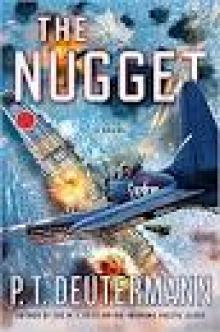 The Nugget
The Nugget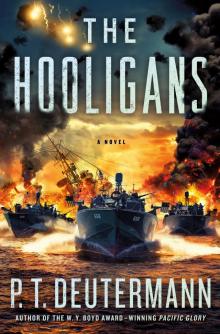 The Hooligans
The Hooligans SPIDER MOUNTAIN
SPIDER MOUNTAIN![Cold Frame [retail] Read online](http://i1.bookreadfree.com/i/03/19/cold_frame_retail_preview.jpg) Cold Frame [retail]
Cold Frame [retail] Sweepers
Sweepers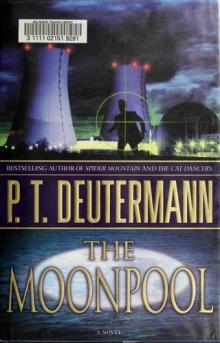 Cam - 03 - The Moonpool
Cam - 03 - The Moonpool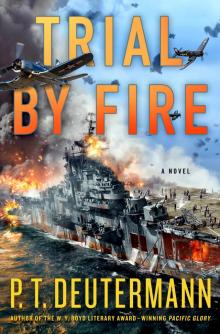 Trial by Fire
Trial by Fire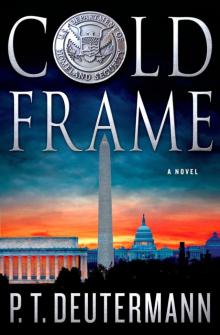 Cold Frame
Cold Frame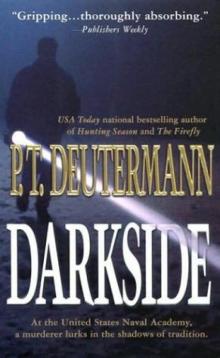 Darkside
Darkside Cam - 04 - Nightwalkers
Cam - 04 - Nightwalkers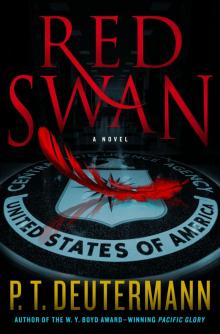 Red Swan
Red Swan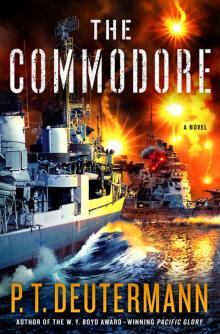 The Commodore
The Commodore Hunting Season
Hunting Season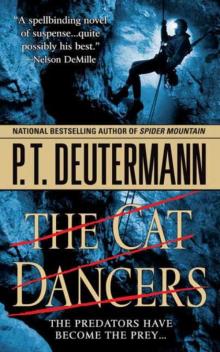 The Cat Dancers
The Cat Dancers Scorpion in the Sea
Scorpion in the Sea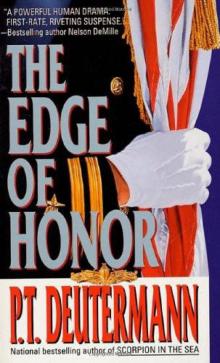 The Edge of Honor
The Edge of Honor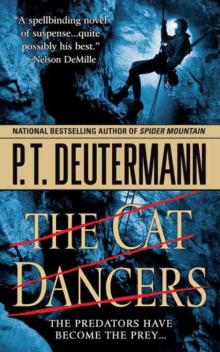 The Cat Dancers cr-1
The Cat Dancers cr-1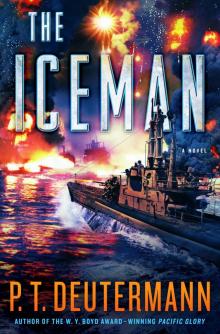 The Iceman
The Iceman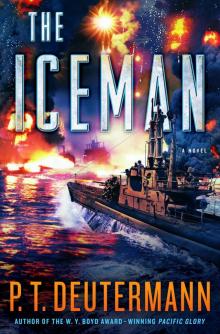 The Iceman_A Novel
The Iceman_A Novel Official Privilege
Official Privilege Sentinels of Fire
Sentinels of Fire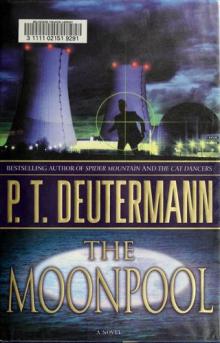 The Moonpool cr-3
The Moonpool cr-3 Nightwalkers cr-4
Nightwalkers cr-4 The Firefly
The Firefly Spider mountain cr-2
Spider mountain cr-2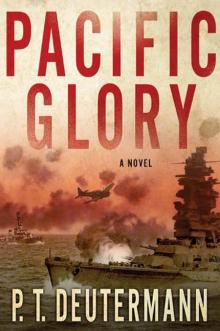 Pacific Glory
Pacific Glory The Last Man
The Last Man